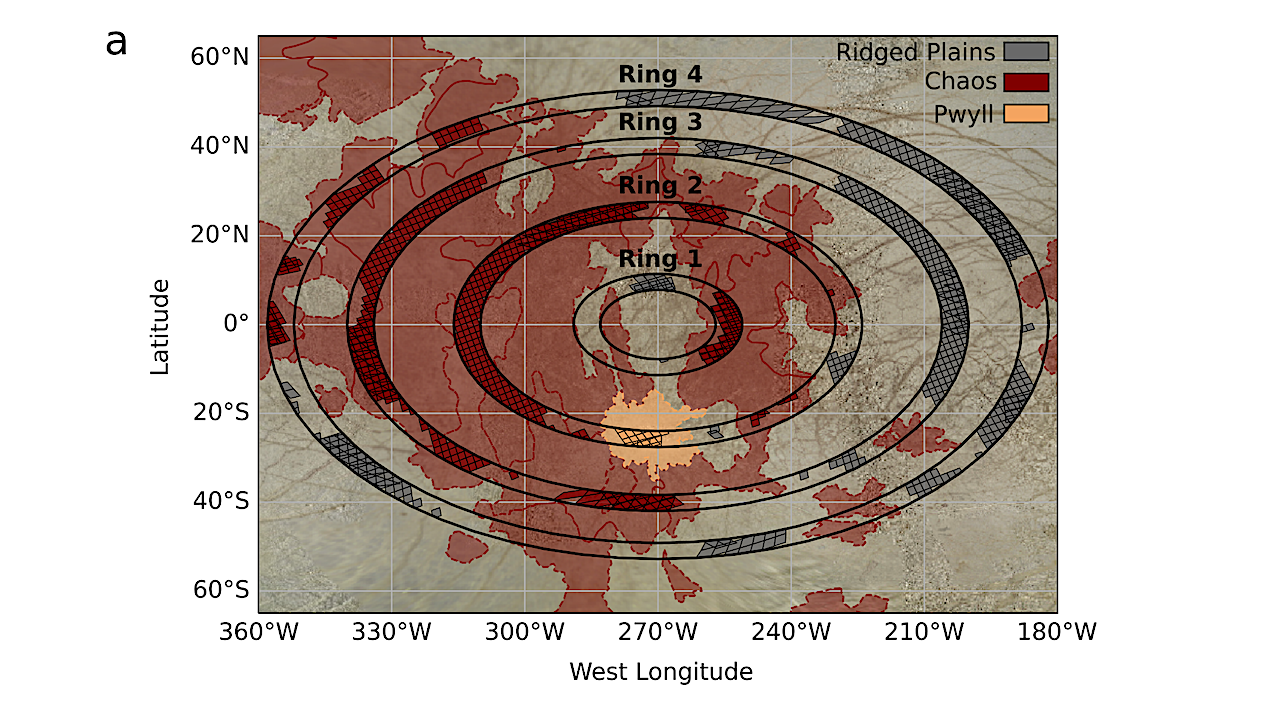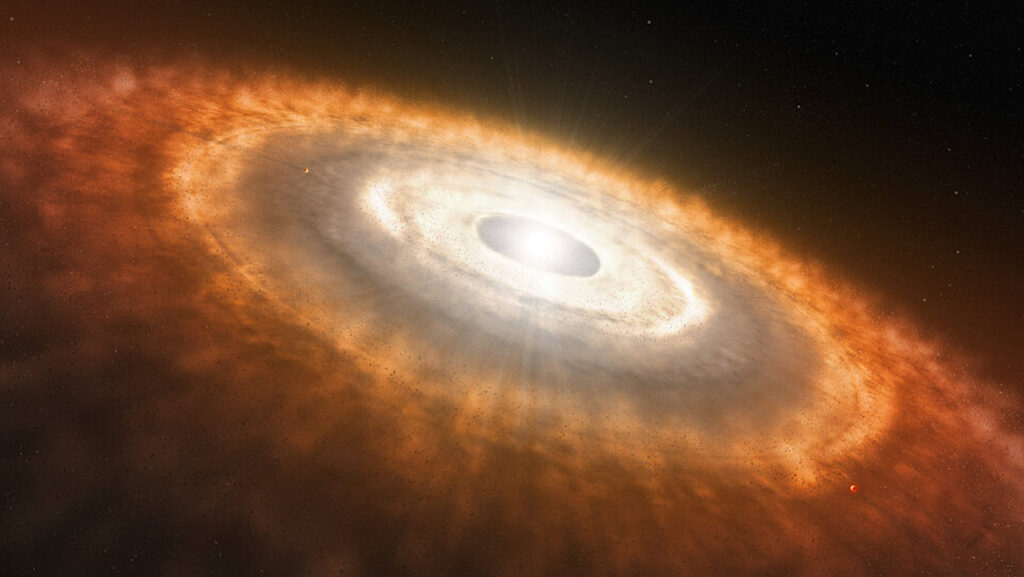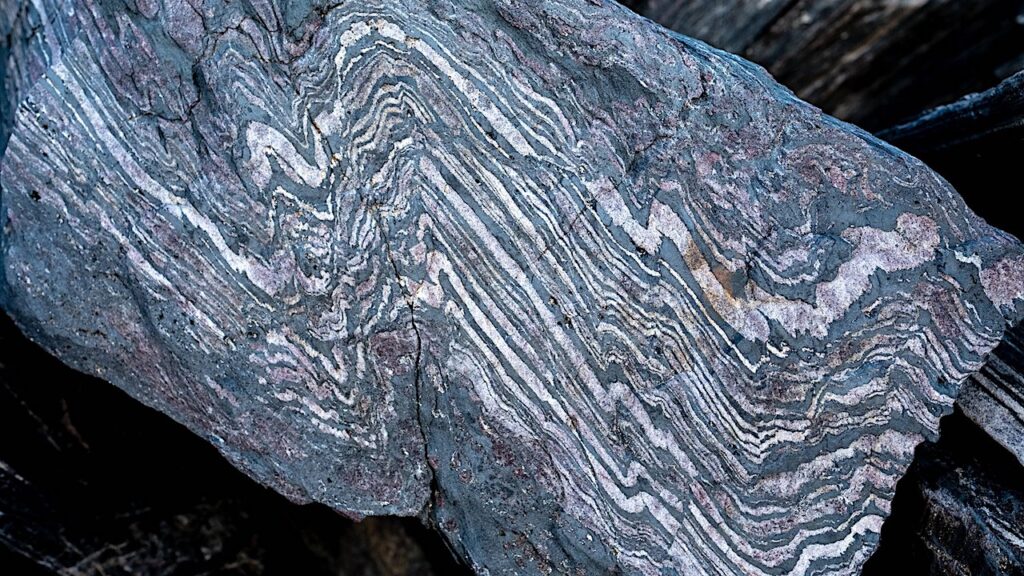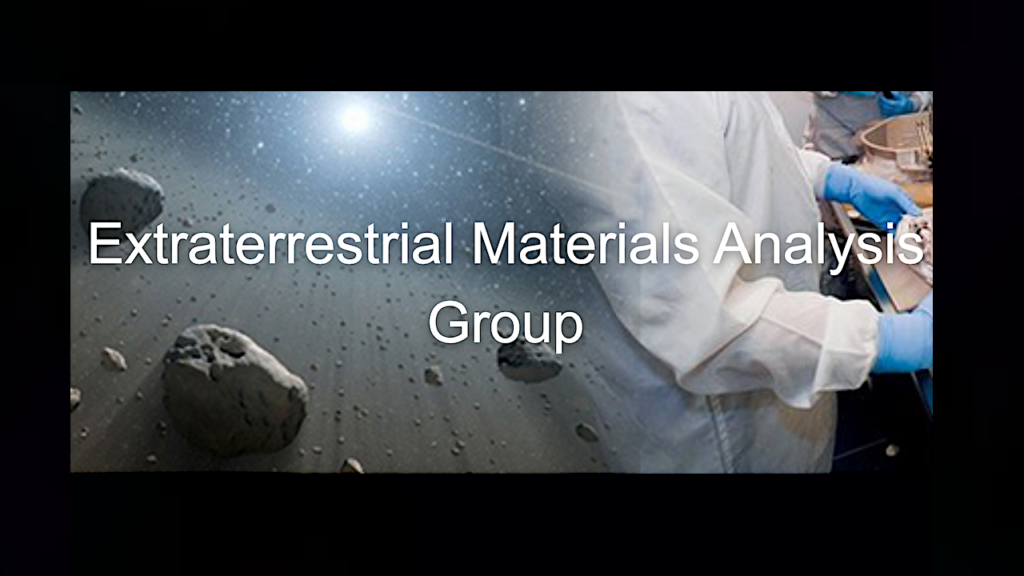The Spatial Distribution of the Unidentified 2.07 μm Absorption Feature on Europa and Implications for its Origin

A weak absorption feature at 2.07 μm on Europa’s trailing hemisphere has been suggested to arise from radiolytic processing of an endogenic salt, possibly sourced from the interior ocean.
However, if the genesis of this feature requires endogenic material to be present, one might expect to find a correlation between its spatial distribution and the recently disrupted chaos terrains. Using archived near-infrared observations from Very Large Telescope/SINFONI with a ∼1 nm spectral resolution and a linear spatial resolution ∼130 km, we examine the spatial distribution of this feature in an effort to explore this endogenic formation hypothesis.
We find that while the presence of the 2.07 μm feature is strongly associated with the irradiation pattern on Europa’s trailing hemisphere, there is no apparent association between the presence or depth of the absorption feature and Europa’s large-scale chaos terrain. This spatial distribution suggests that the formation pathway of the 2.07 μm feature on Europa is independent of any endogenous salts within the recent geology. Instead, we propose that the source of this feature may simply be a product of the radiolytic sulfur cycle or arise from some unidentified parallel irradiation process.
Notably, the 2.07 μm absorption band is absent from the Pwyll crater ejecta blanket, suggesting that radiolytic processing has not had enough time to form the species responsible and placing a lower limit on the irradiation timescale. We are unable to find a plausible spectral match to the 2.07 μm feature within the available laboratory data.
M. Ryleigh Davis, Michael E. Brown, Samantha K. Trumbo
Comments: 12 pages, 3 figures, published in PSJ
Subjects: Earth and Planetary Astrophysics (astro-ph.EP)
Cite as: arXiv:2308.13787 [astro-ph.EP] (or arXiv:2308.13787v1 [astro-ph.EP] for this version)
Journal reference: The Planetary Science Journal, 4, 148 (2023)
Related DOI:
https://doi.org/10.3847/PSJ/aced96
Focus to learn more
Submission history
From: M. Ryleigh Davis
[v1] Sat, 26 Aug 2023 06:58:53 UTC (9,931 KB)
https://arxiv.org/abs/2308.13787
Astrobiology, Astrochemistry,








